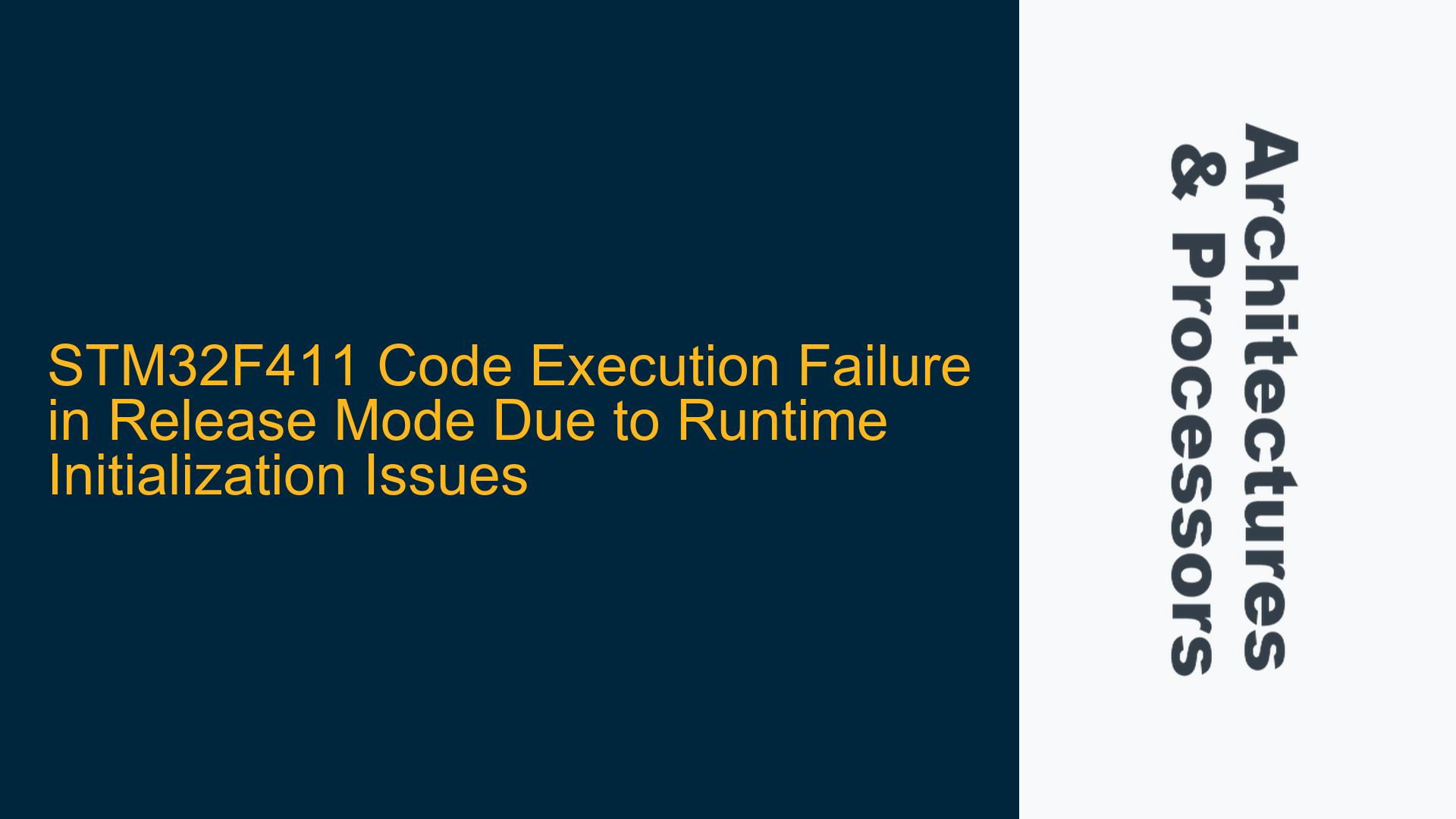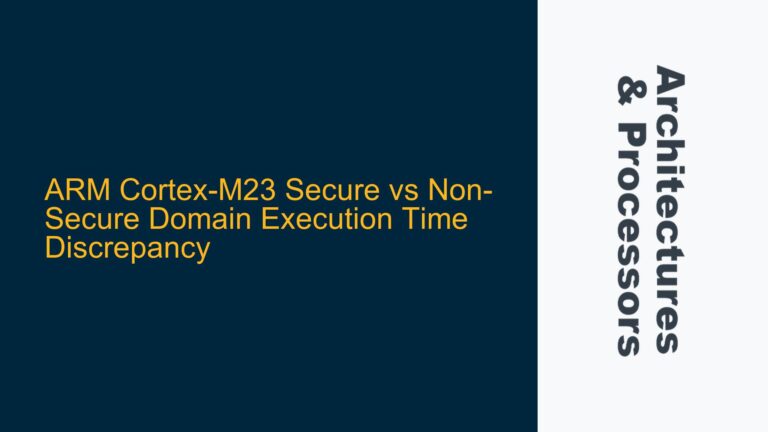Clock Configuration and Runtime Initialization Hangs in STM32F411
The core issue revolves around an STM32F411 microcontroller where the firmware executes correctly only when stepped through a debugger but fails to run in Release mode. The problem manifests during the clock configuration phase, specifically when the microcontroller attempts to initialize the High-Speed Internal (HSI) clock, configure the Phase-Locked Loop (PLL), and switch the system clock source to the PLL. The code also includes initialization routines for an LED (LD3) connected to GPIO port D, which serves as a visual indicator of the execution flow. The LED lights up when the code is stepped through in debug mode but fails to do so in Release mode, indicating that the system hangs during the early stages of execution.
The issue is further traced to the runtime initialization code generated by the Segger Embedded Studio toolchain. The _start function, which is responsible for setting up the C runtime environment, calls linker initialization functions (__SEGGER_init_zero and __SEGGER_init_copy) to initialize memory segments, heap, and global objects. The system hangs during these initialization routines, preventing the main application code from executing. This behavior suggests a potential misconfiguration or timing issue in the runtime initialization process, exacerbated by the absence of debugger intervention.
Misconfigured Clock Settings and Runtime Initialization Timing
The primary cause of the issue lies in the interaction between the clock configuration code and the runtime initialization process. The STM32F411 relies on precise timing and sequencing of clock configuration steps, including enabling the HSI, configuring the PLL, and switching the system clock source. Any deviation from the expected timing or sequence can cause the system to hang, especially when running in Release mode where debugger-induced delays are absent.
The runtime initialization process, which includes zero-initialization of memory segments and copying of initialized data, is timing-sensitive. The __SEGGER_init_zero function, which zero-initializes memory, is called repeatedly, consuming a significant amount of time. This prolonged initialization process can interfere with the clock configuration, particularly if the system attempts to switch to the PLL before it is fully stable. Additionally, the absence of proper synchronization mechanisms, such as memory barriers or delays, can exacerbate the issue, leading to inconsistent behavior between debug and Release modes.
Another potential cause is the misconfiguration of the Flash memory access latency. The STM32F411 requires the Flash latency to be set appropriately based on the system clock frequency. If the Flash latency is not configured correctly, the microcontroller may experience wait states or access violations, causing the system to hang. The provided code sets the Flash latency to 2 wait states (FLASH_ACR_LATENCY_2WS), but this setting may not be sufficient if the clock configuration process is not synchronized with the Flash memory controller.
Implementing Synchronization Mechanisms and Optimizing Runtime Initialization
To resolve the issue, several steps can be taken to ensure proper synchronization and timing during the clock configuration and runtime initialization processes. First, it is essential to insert memory barriers (__DSB and __ISB) at critical points in the clock configuration code to ensure that register writes are completed before proceeding to the next step. The provided code already includes these barriers, but their placement and effectiveness should be verified.
Next, the Flash latency configuration should be revisited. The Flash latency must be set based on the final system clock frequency, and it may be necessary to add a delay after configuring the Flash latency to allow the Flash memory controller to stabilize. The following code snippet demonstrates the recommended approach:
_BMD(FLASH->ACR, FLASH_ACR_LATENCY, FLASH_ACR_LATENCY_2WS);
__DSB();
__ISB();
volatile uint32_t delay = 1000;
while (delay--) {};
Additionally, the runtime initialization process should be optimized to minimize the time spent in the __SEGGER_init_zero and __SEGGER_init_copy functions. This can be achieved by reducing the amount of zero-initialized data or by using a more efficient initialization routine. If possible, the linker script should be modified to disable unnecessary zero-initialization, as this can significantly reduce the initialization time.
Finally, the clock configuration code should be reviewed to ensure that all steps are executed in the correct sequence and with appropriate delays. The following table summarizes the recommended sequence and synchronization points:
| Step | Description | Synchronization Point |
|---|---|---|
| Enable HSI | Enable the High-Speed Internal oscillator | __DSB(); __ISB(); |
| Wait for HSI Ready | Wait until the HSI oscillator is stable | while (!(RCC->CR & RCC_CR_HSIRDY)) {}; |
| Configure PLL | Set PLL parameters (M, N, P, Q) and enable PLL | __DSB(); __ISB(); |
| Wait for PLL Ready | Wait until the PLL is locked | while (!(RCC->CR & RCC_CR_PLLRDY)) {}; |
| Configure Flash Latency | Set Flash latency based on the final system clock frequency | __DSB(); __ISB(); |
| Switch System Clock to PLL | Switch the system clock source to the PLL | __DSB(); __ISB(); |
| Wait for Clock Switch | Wait until the system clock source is switched to the PLL | while (!(RCC->CFGR & RCC_CFGR_SWS_PLL)) {}; |
By following these steps and ensuring proper synchronization, the STM32F411 should be able to execute the firmware correctly in both debug and Release modes. The key is to balance the timing requirements of the clock configuration with the runtime initialization process, ensuring that the system remains stable throughout the startup sequence.






